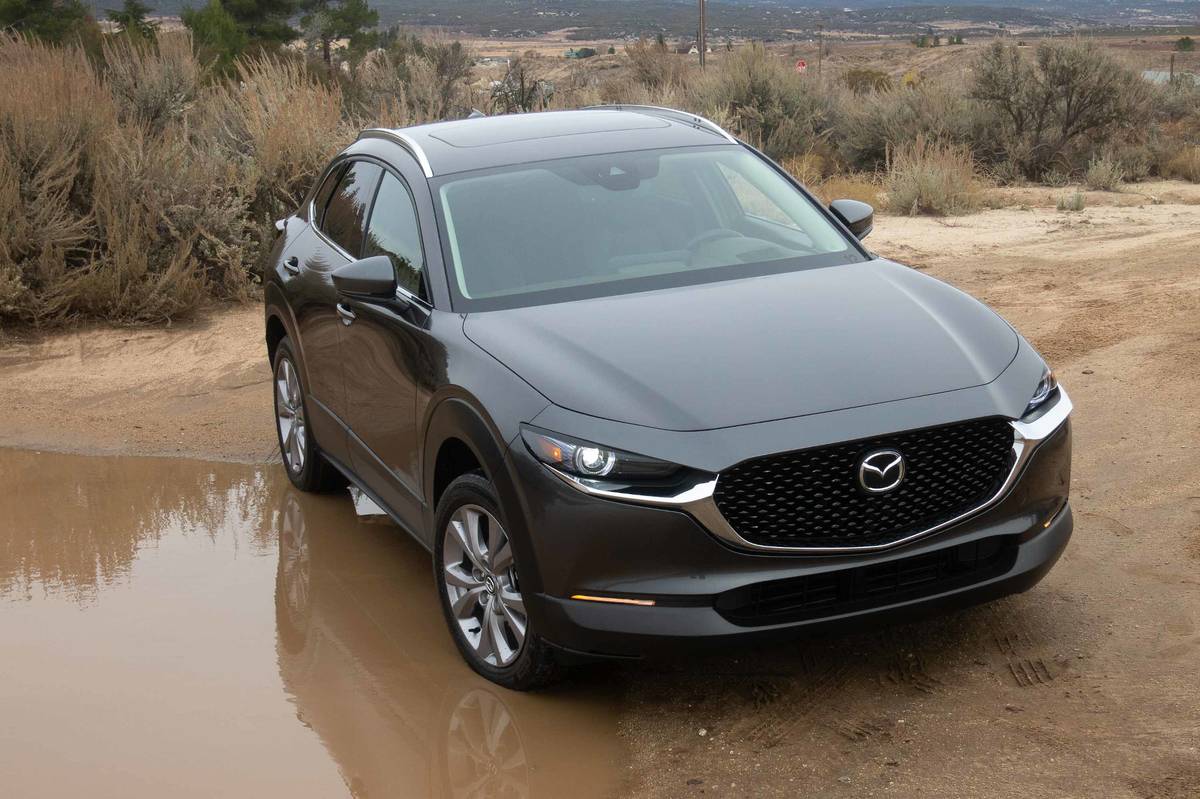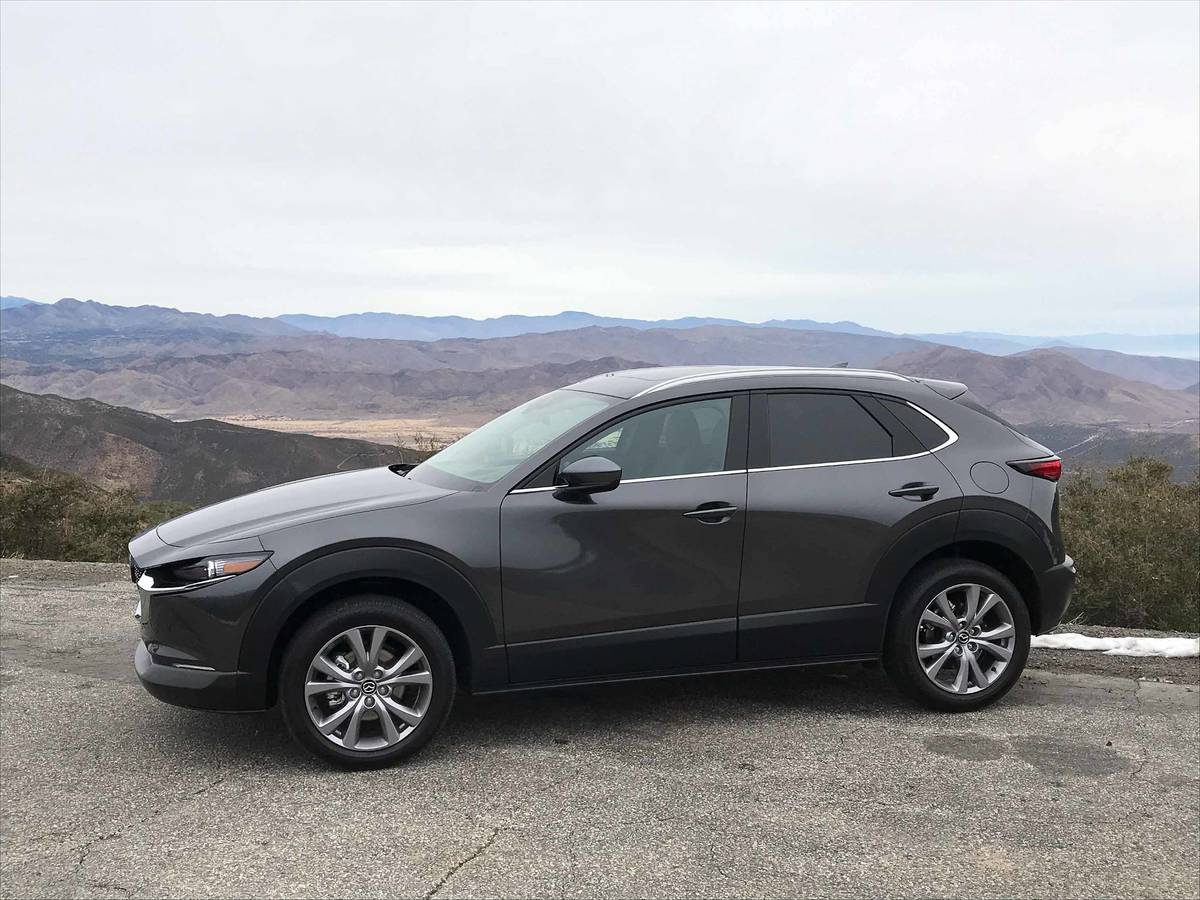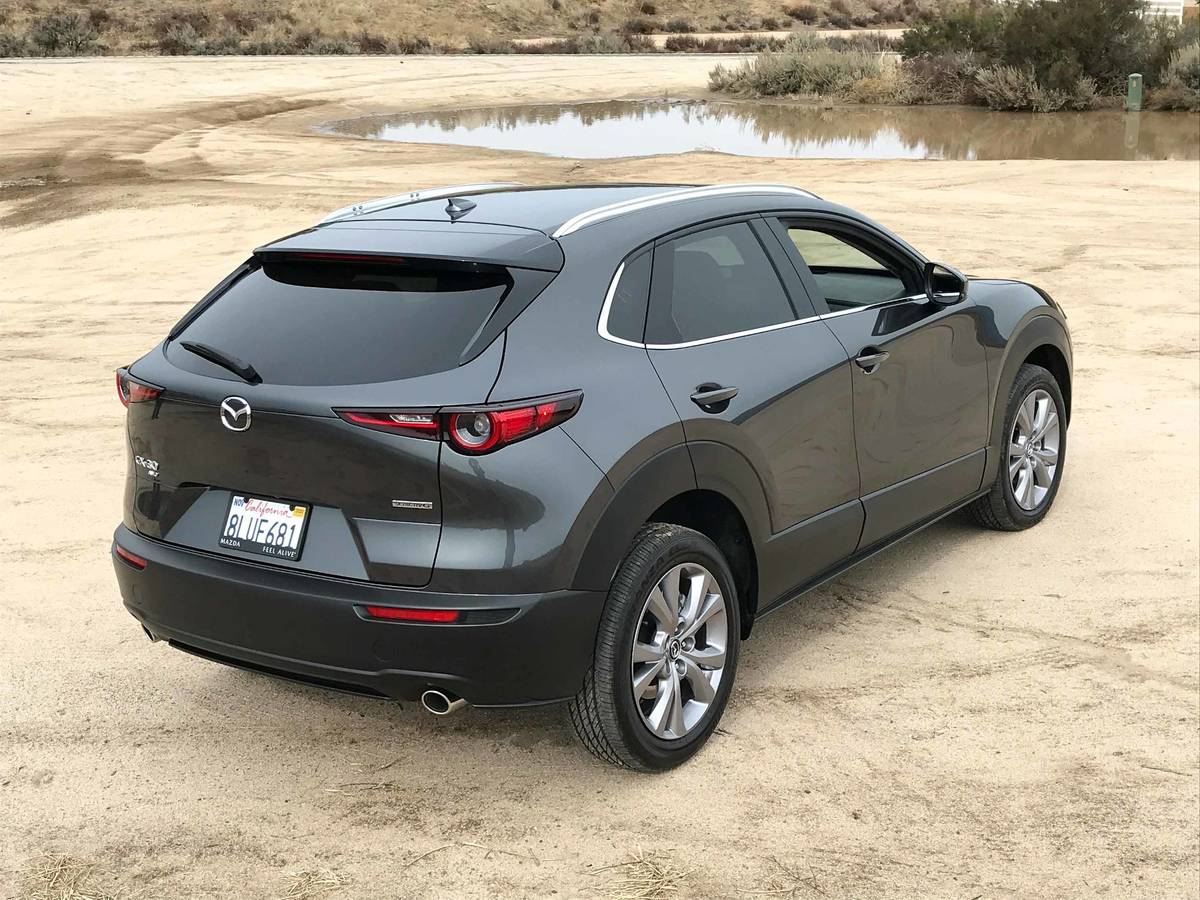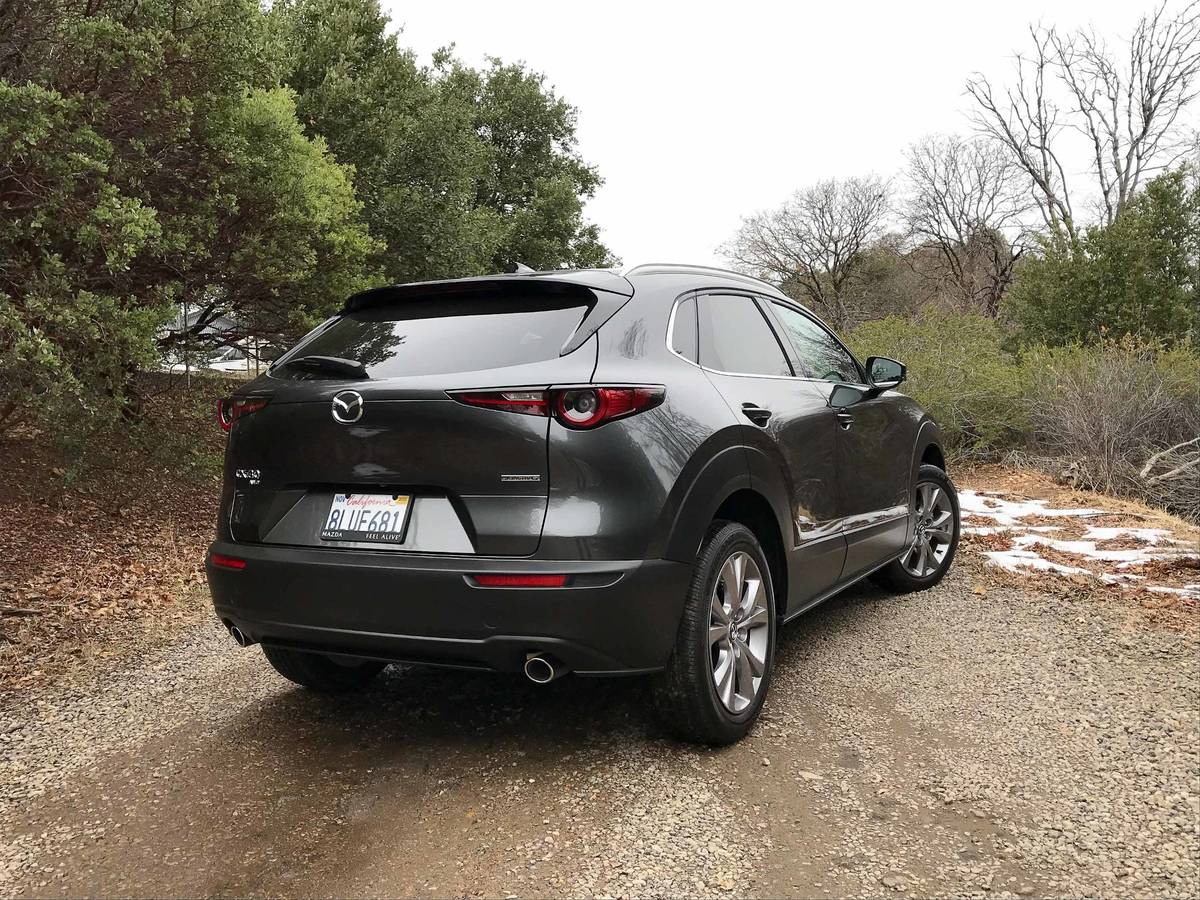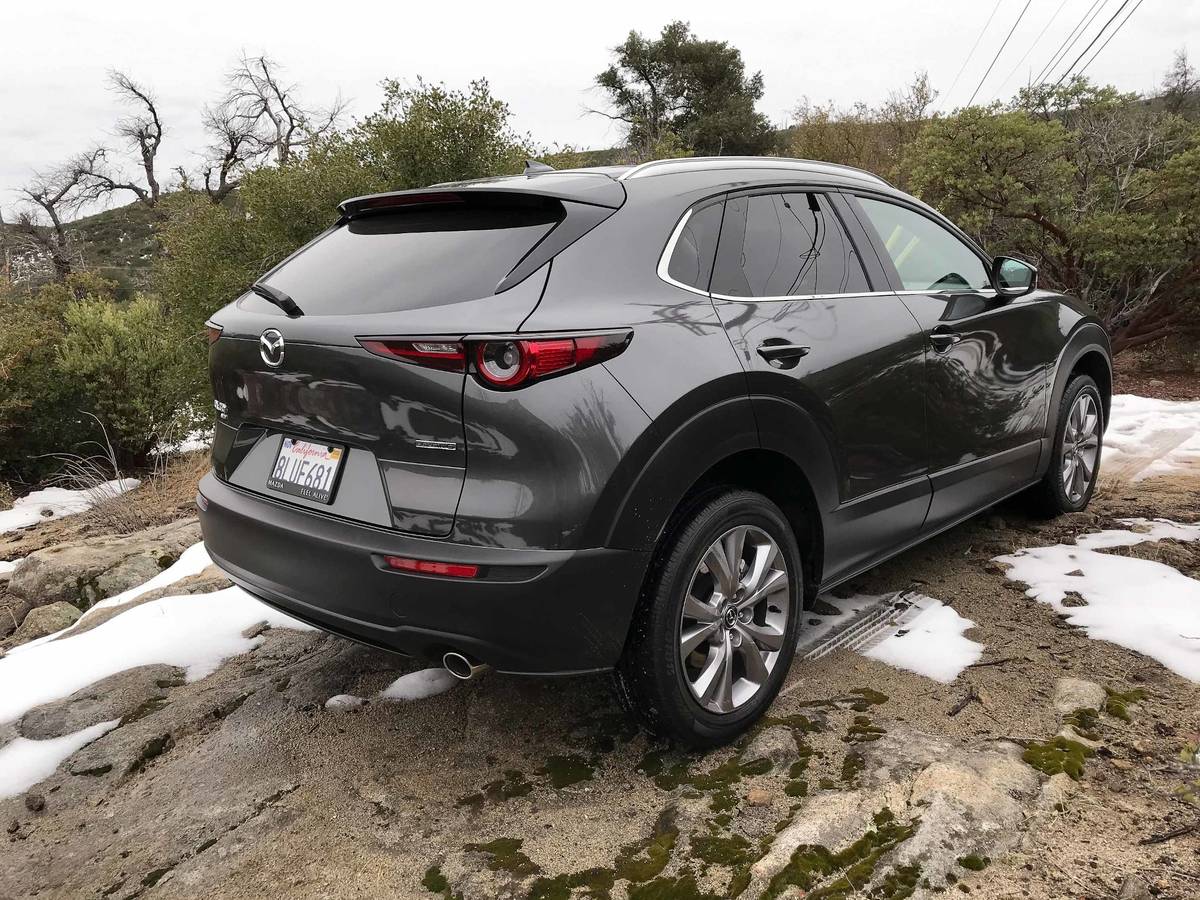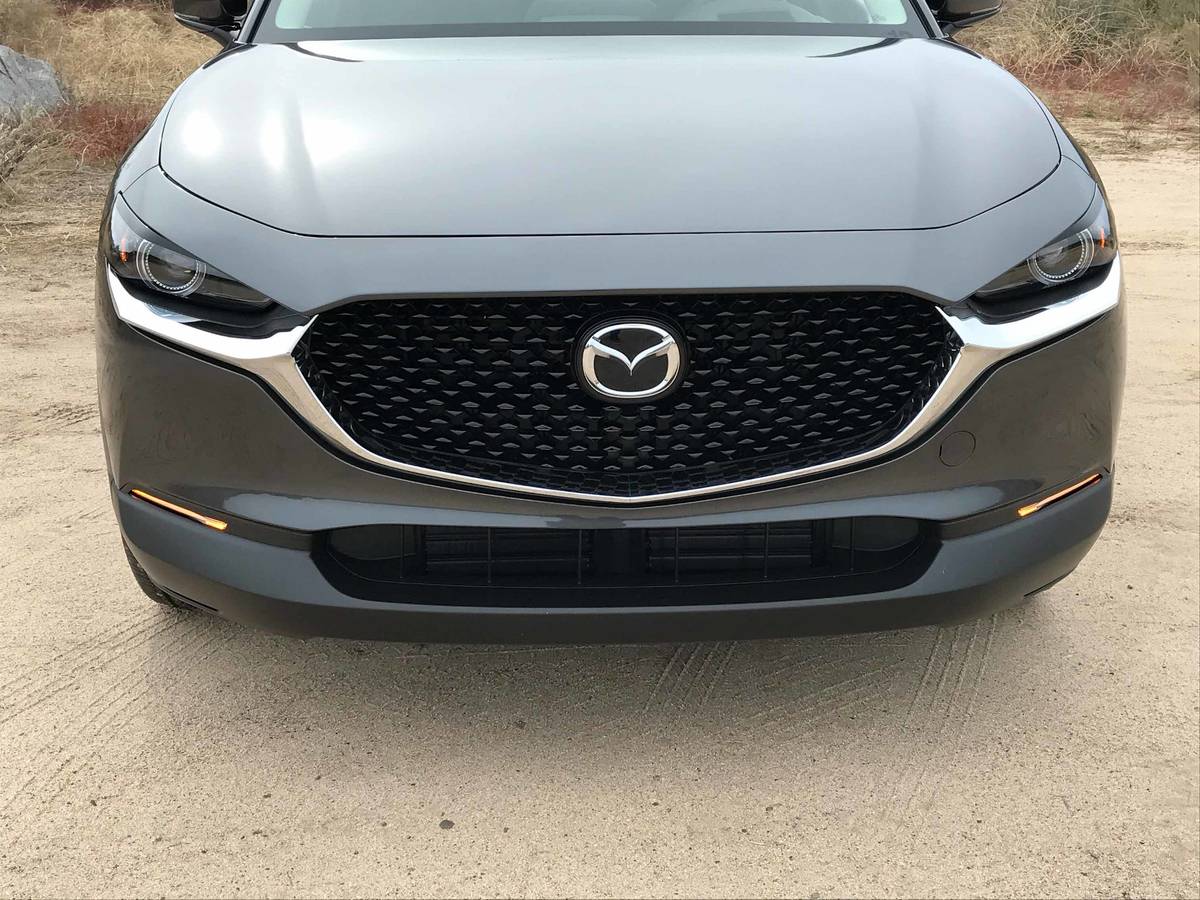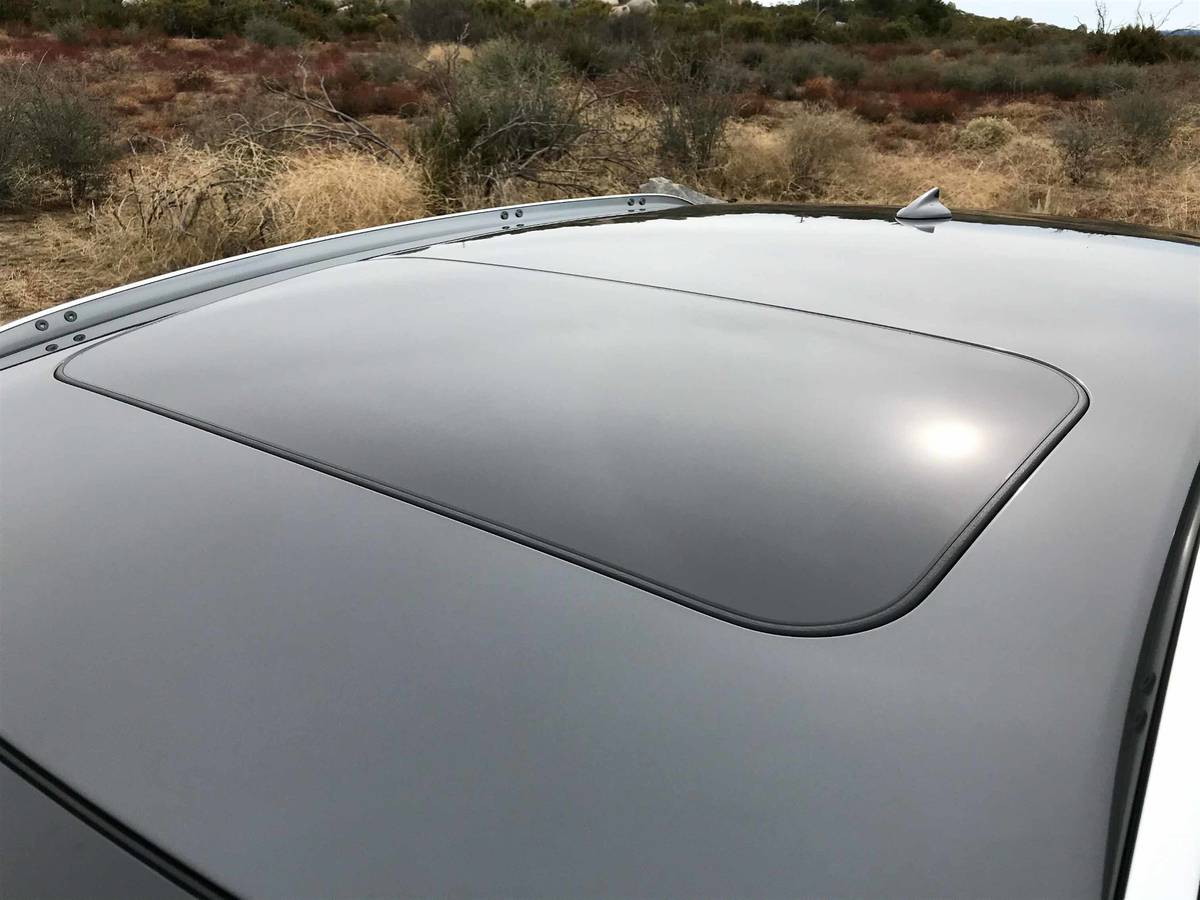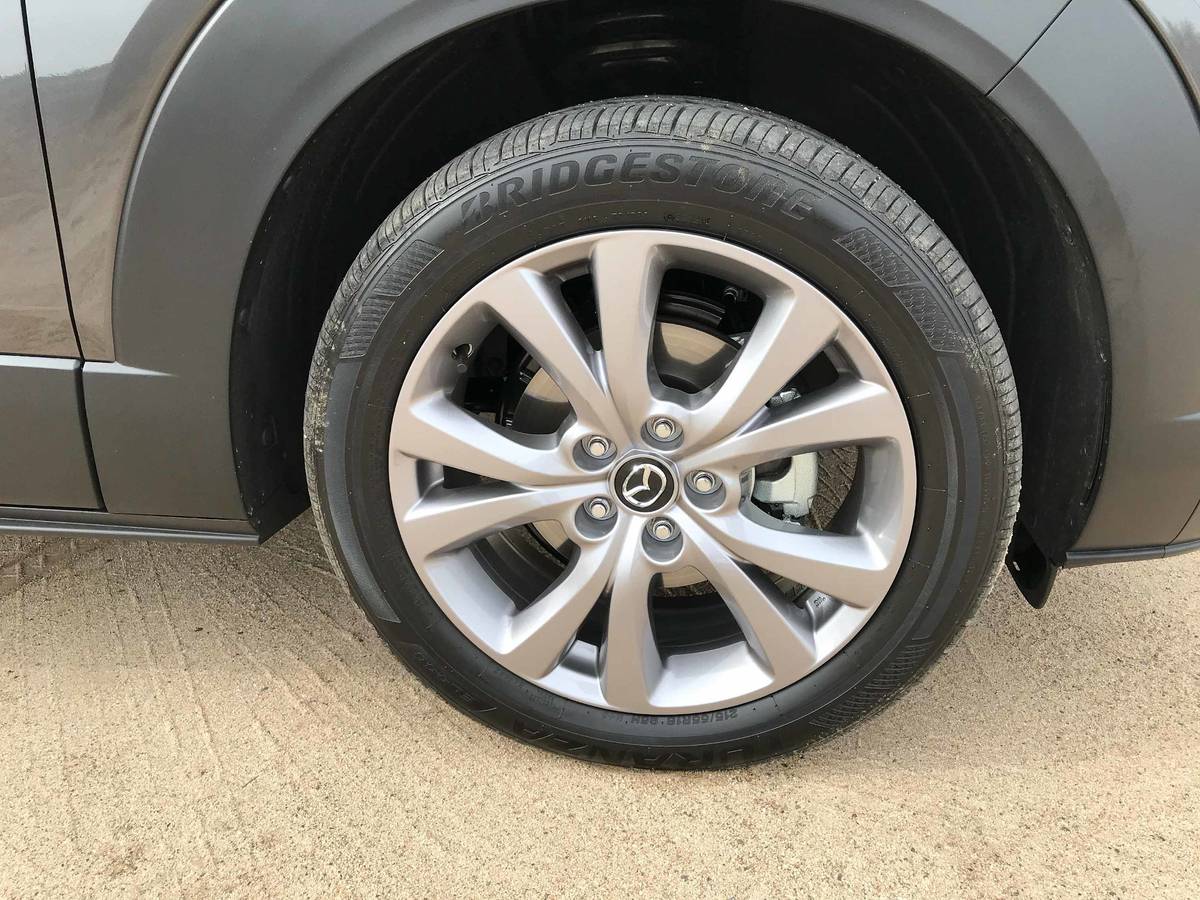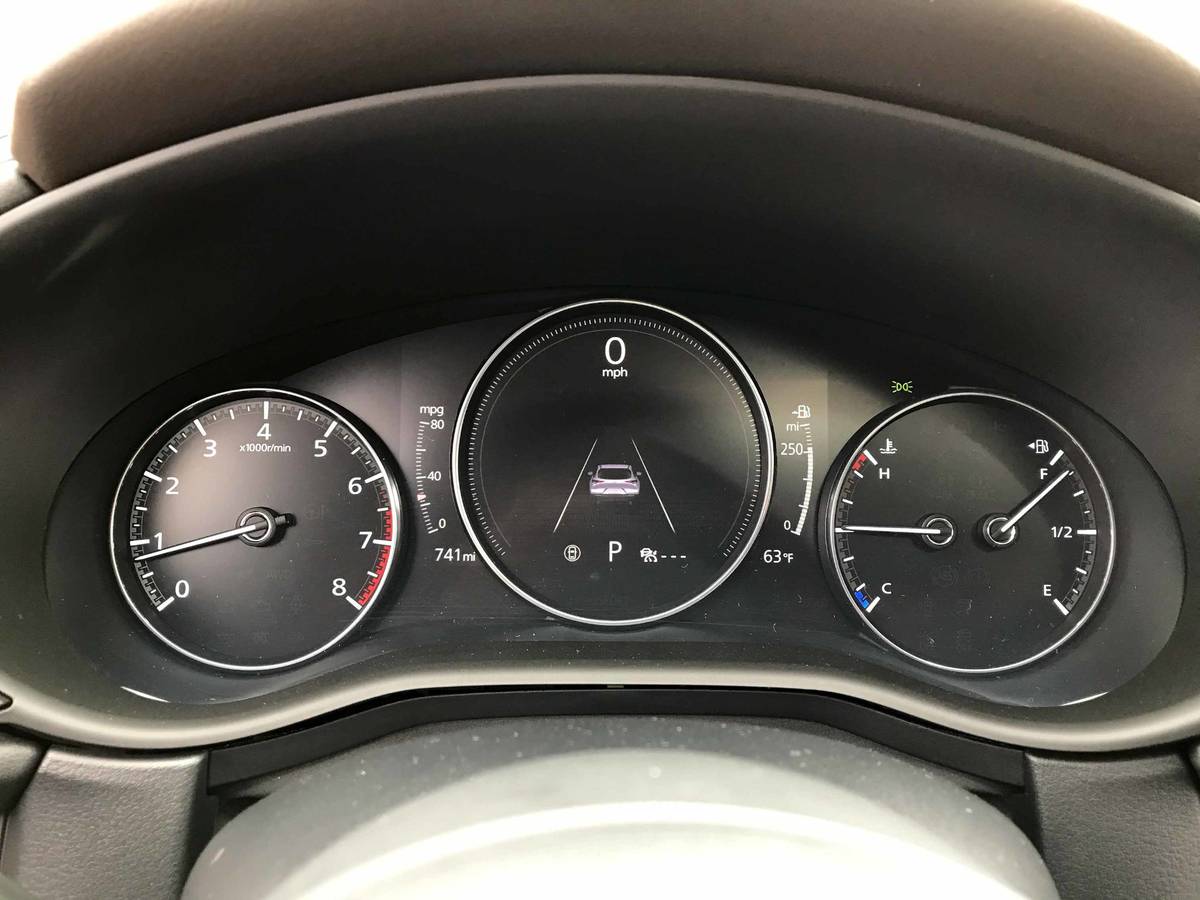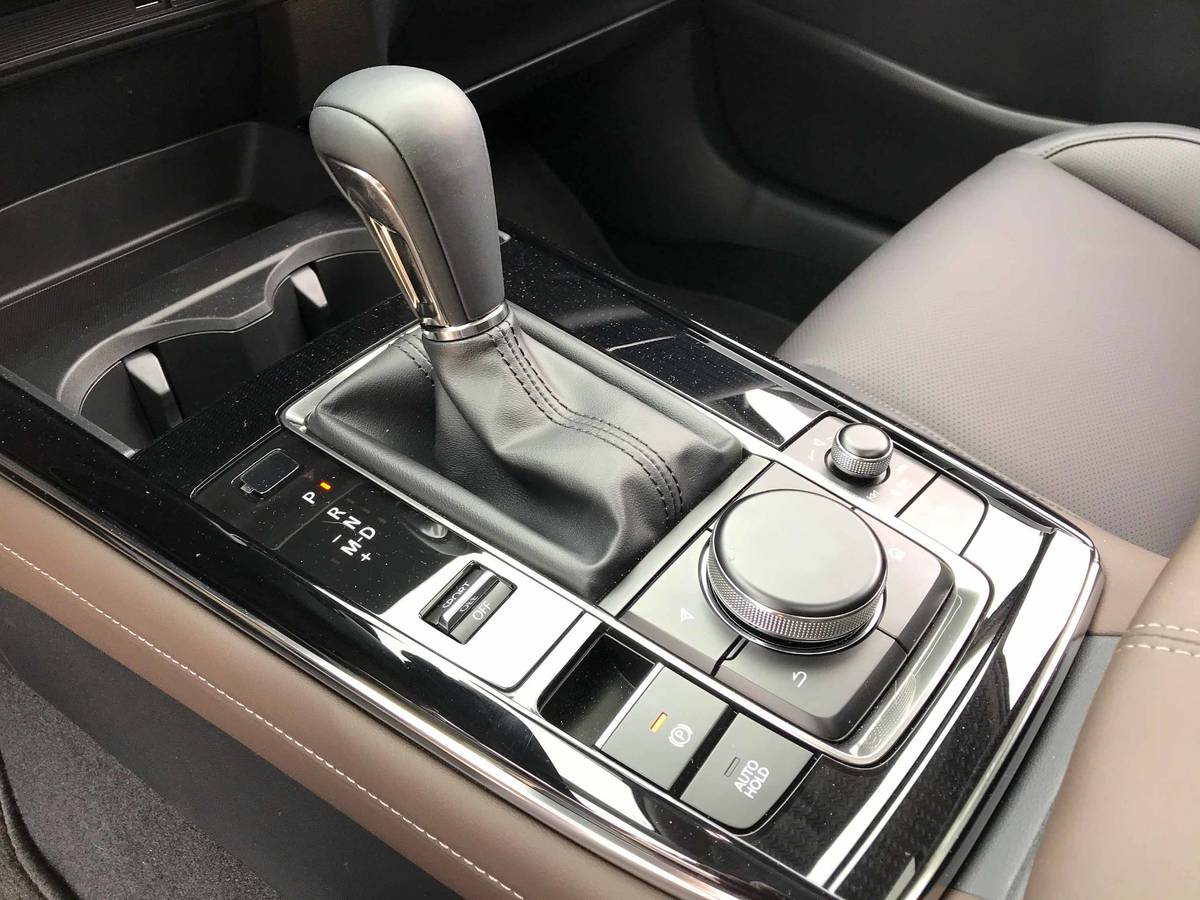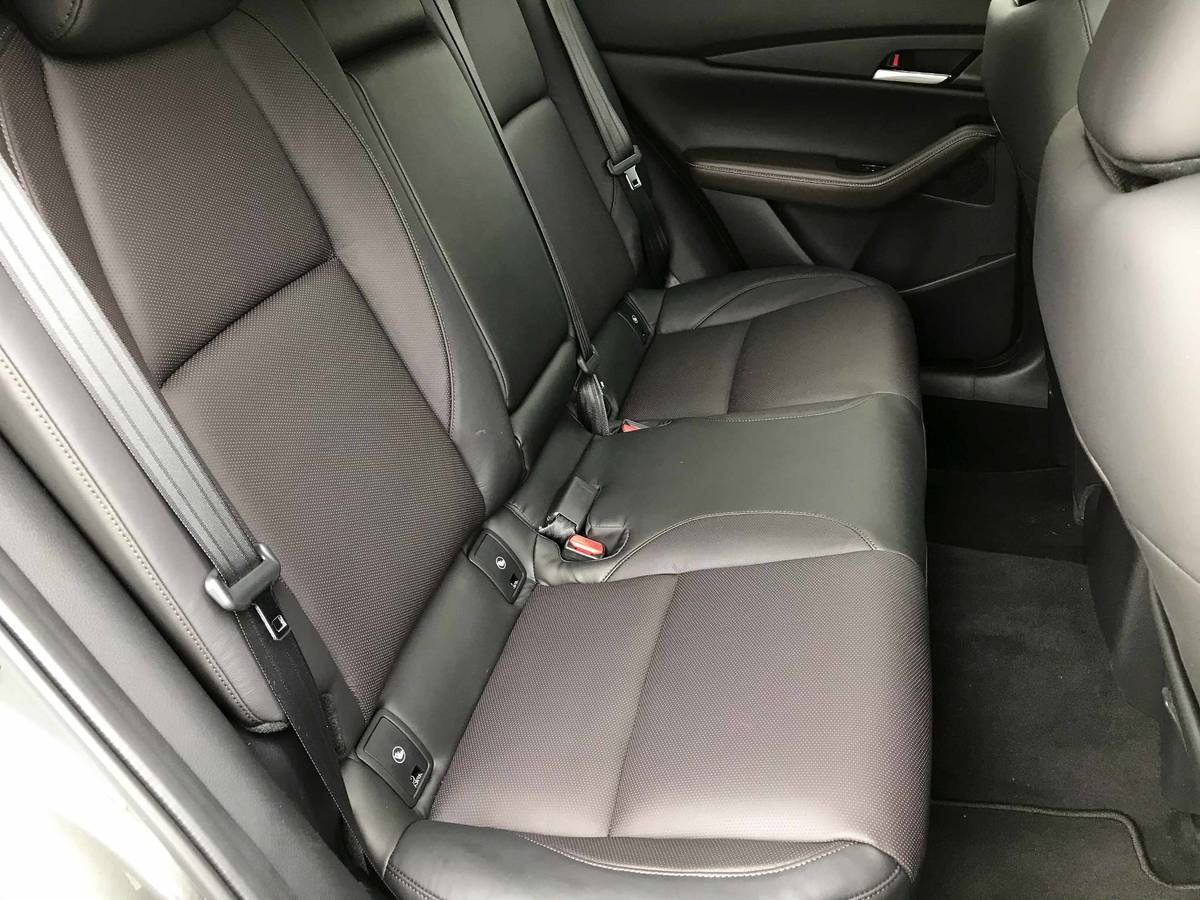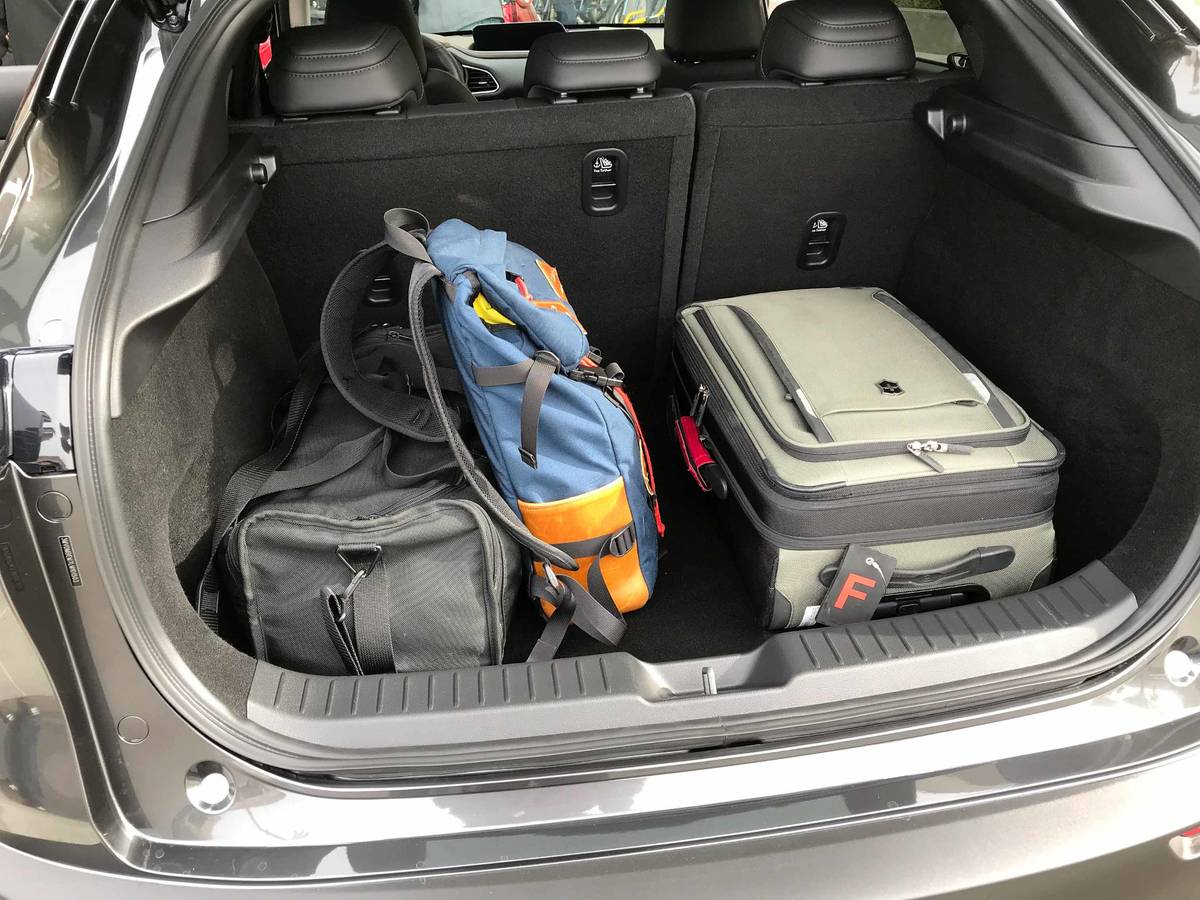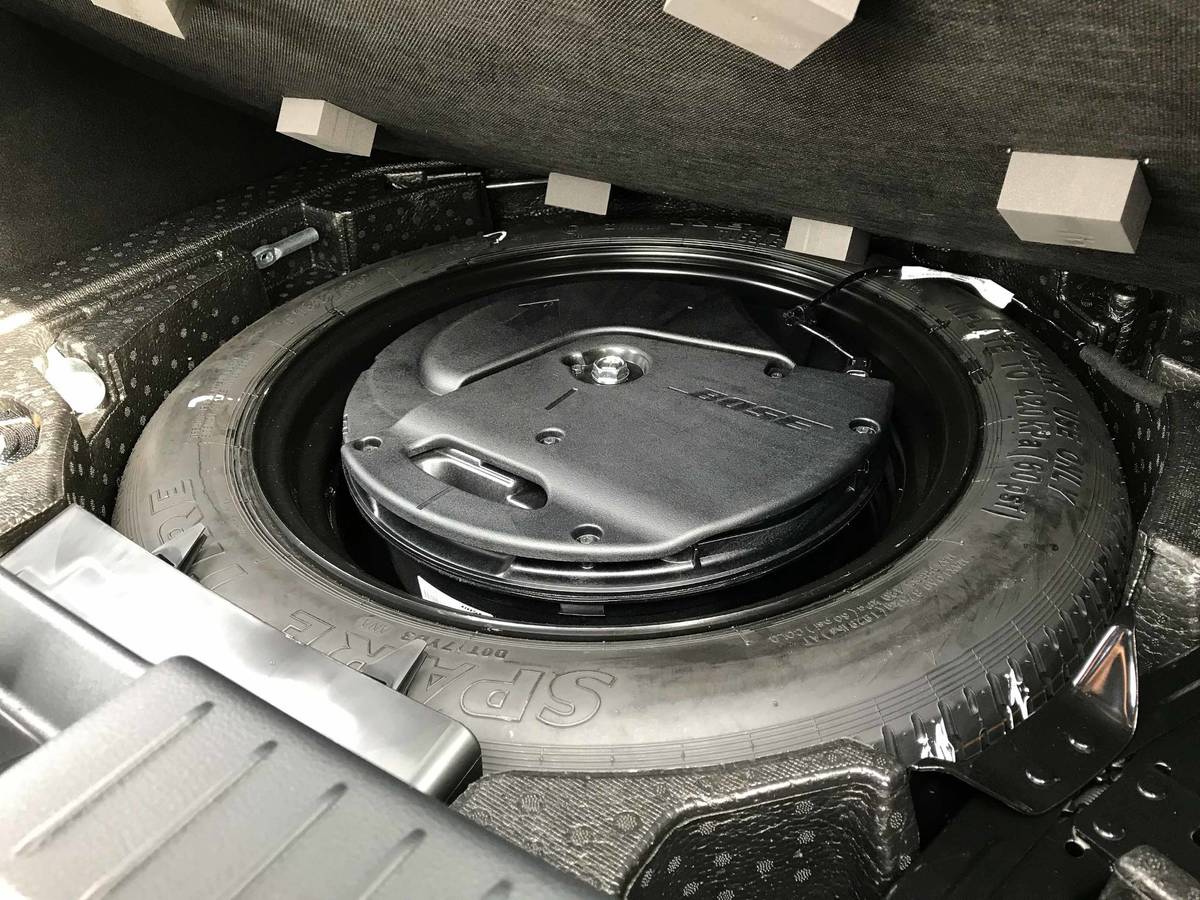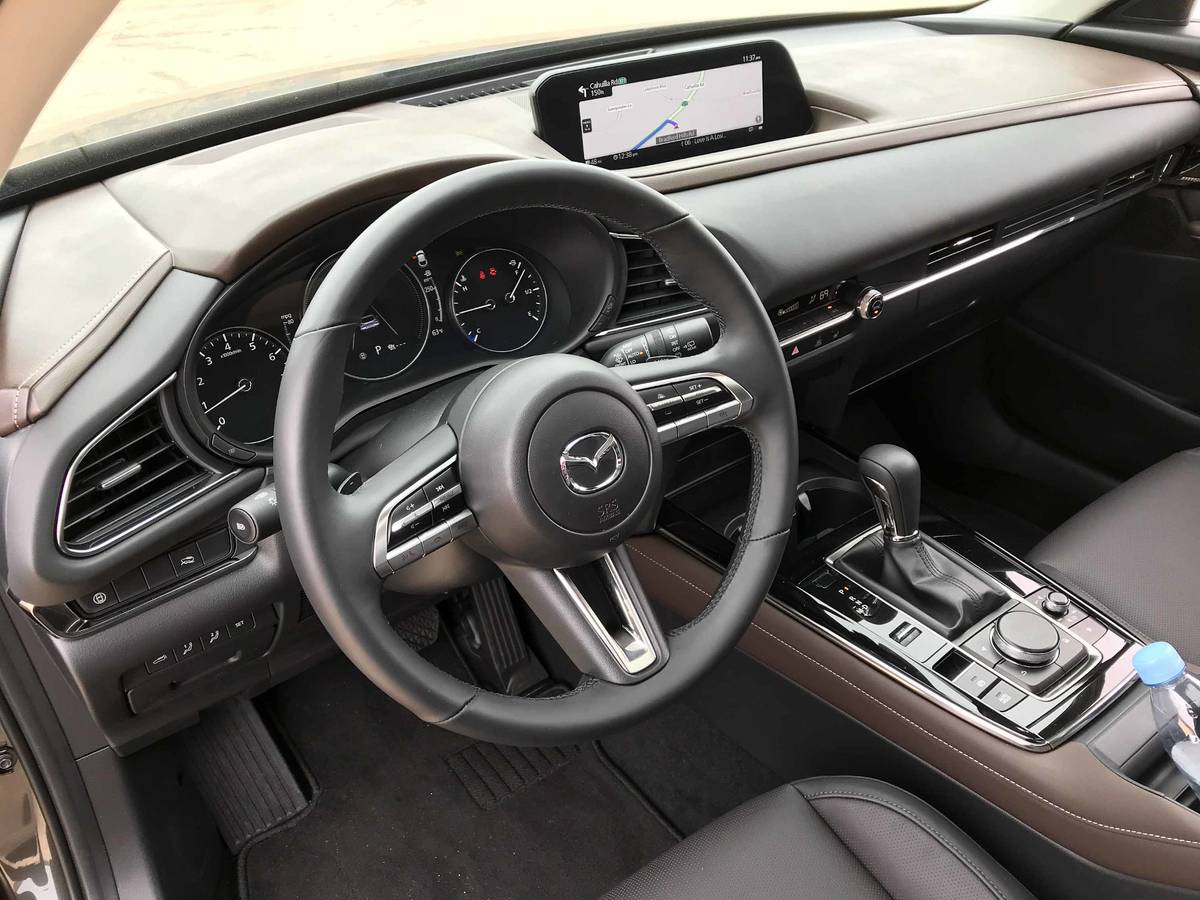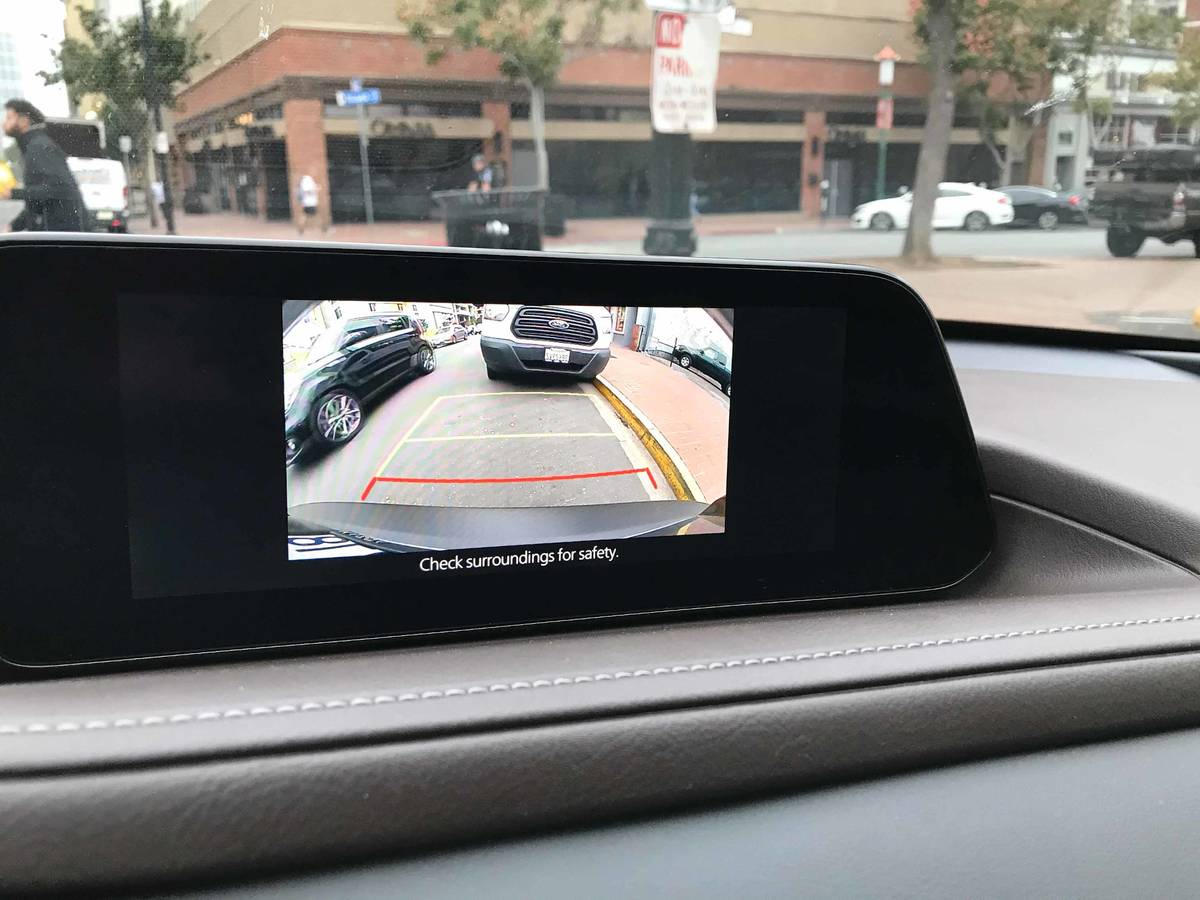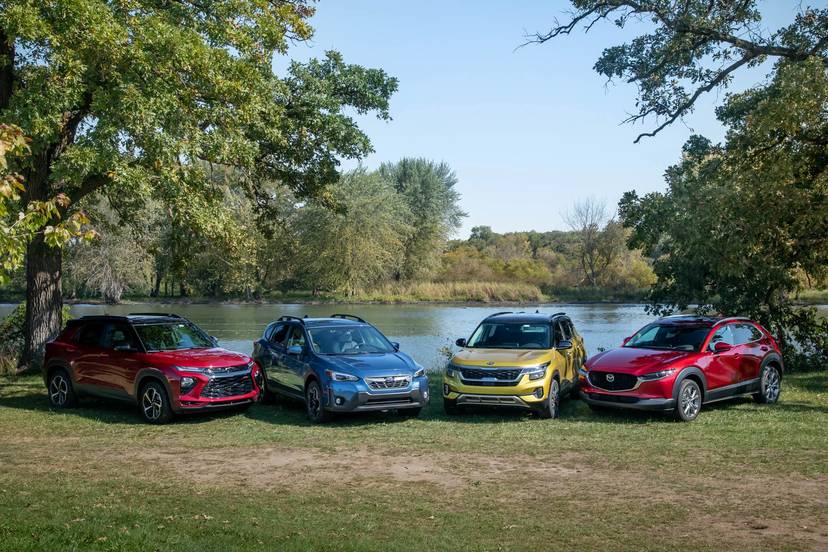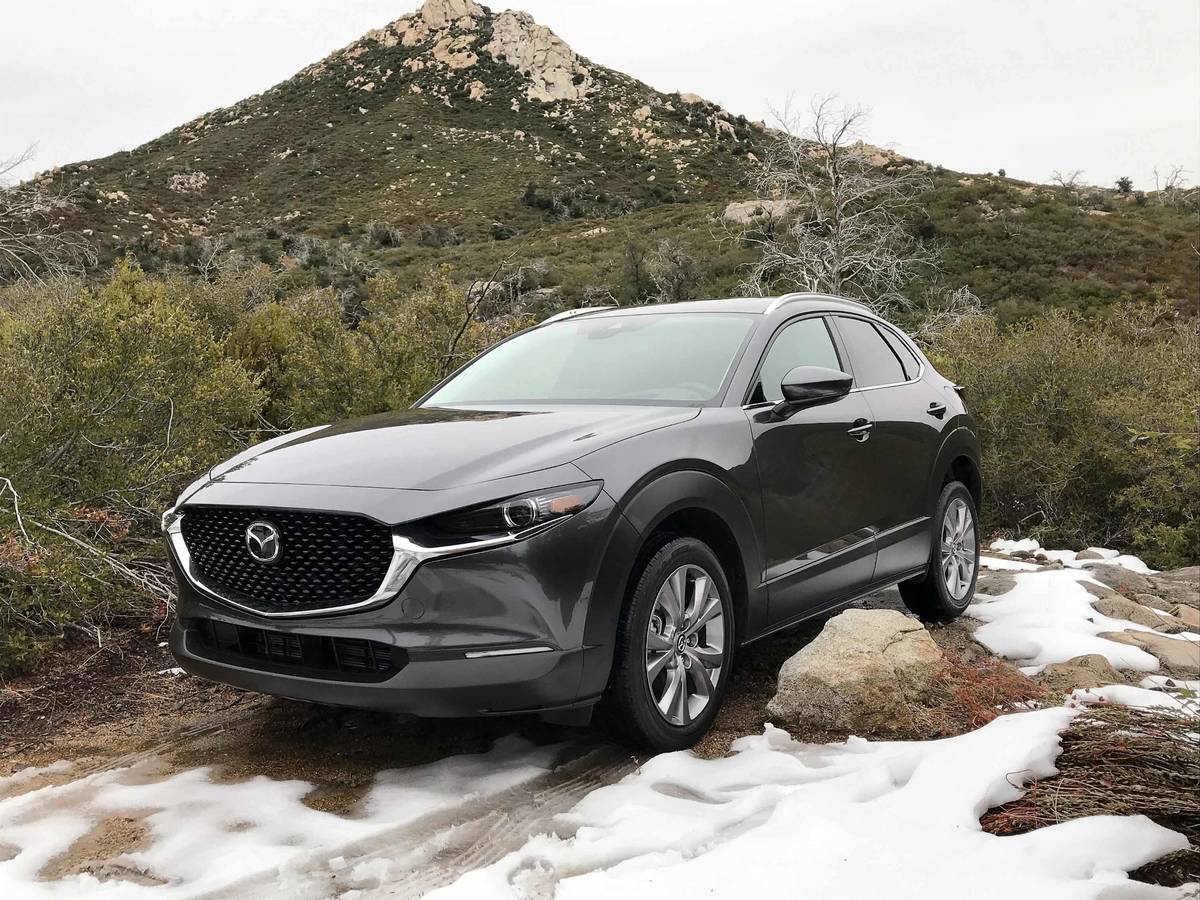
Automakers continue to find new ways to slice and dice SUVs for smaller niches, and the 2020 Mazda CX-30 is a subcompact that narrowly slots between the CX-3 and CX-5 in Mazda’s SUV lineup. But more than that, the CX-30 subcompact SUV is right-sized to better appeal to buyers.
Related: Mazda CX-30 Brings Mazda3 Style to All-New Small SUV
I’m a fan of the CX-3 for its driving manners as well as its style that’s a cut above most rivals. But it’s a mini-SUV based on the global Mazda2 subcompact car and is too small even for many urban U.S. buyers (Mazda officials admit it was designed more for European tastes). The roomier CX-30 — about an inch wider and about 5 inches longer on a wheelbase 3.3 inches longer — is based on the new Mazda3 compact car. It shares many of the car’s bits and packages them into an SUV that should have more mainstream appeal.
The resulting CX-30 is a stylish utility with the above-class road dynamics and quality characteristic of other Mazdas. It will need those and more to take on the increasingly crowded competition, from current subcompact SUV leaders including the Honda HR-V and Nissan Rogue Sport to other newcomers, such as the Kia Seltos and Chevrolet Trailblazer. I checked out the CX-30 at a Mazda drive in the desert and mountains of Southern California (per company policy Cars.com pays for its travel and lodging at such automaker-sponsored events). There are four trim levels, including base, Select, Preferred and the test vehicles, which were all Premium.
Stylish Minimalism
The Mazda design evolution that made its production debut with the redone 2019 Mazda3 makes its first SUV appearance with the CX-30. It features smooth and mostly unadorned sheet metal that emphasizes the shape and surfaces. A sweeping curve runs from the headlights to the rear wheels, and the subtle side shaping creates interesting S-shaped highlights from many angles. Generous (maybe a little too much) dark cladding on the bumpers, large wheel arches and lower body visually raise the height, while the rear roof pillars slope steeply back for a more coupelike roofline. The overall effect is classy and near-premium for a subcompact SUV, even more so in the pricier top two trim levels.
First-Class Cabin
The interior has a lot of Mazda3 (a good thing) with a bit more room. The Premium trim level is just that, with a rich black and brown (or white) color scheme and quality perforated leather accented by blue in the perforations. The seats are comfortable and new shaping holds you in place without the restrictive bolstering of some Mazdas. The dashboard has a layered design with contrasting textures and padded materials, and the controls and trim details look and feel solid.
Boosting the quality interior feel is the fact that the cabin is impressively quiet for a small SUV, with very little road and wind noise. Among the ways quietness was designed in was the relocation of audio speakers from the doors to under the dashboard, eliminating the openings in the door panels.
Unlike in many small SUVs, materials quality also holds up in the backseat. There’s headroom for adults there, too, but the legroom is tight. Adult passengers will need concessions from the front occupants and still will have their knees hard against the front seats. The backseat gets its own air vents but no device charging — the nearest USB port is in the center console bin.
Visibility for a small SUV to the rear is average but quite good to the front thanks to slim front pillars and side mirrors mounted on the doors. A packaging oddity to beware of, however: If heated front seats are a must-have, you need to move up three trim levels to get them.
Media Tech Is a Hard Sell
Mazda went to great lengths at the event to justify the CX-30’s multimedia controls — a rotary push-knob setup and shortcut buttons on the center console along with a separate multifunction volume control. Unlike previous Mazdas, the standard 8.8-inch display does not respond to touch even when the vehicle is stopped. The idea is that the setup is safer because the controls are where your hand falls and you can keep your eyes close to the road while glancing at the screen. That actually works for me, but consumer surveys indicate I’m an outlier. It feels particularly unnatural to many to operate Apple CarPlay or Android Auto without a touchscreen. You should test-drive the Mazda system if you consider this SUV.
Meanwhile, the widescreen display is standard. It’s powered by Mazda’s latest system, which is improved in look and operation, but it’s still heavy on menus and requires multiple steps for common functions. And you have to move up from the base to the Select trim level to get CarPlay and Android Auto.
On the plus side, the climate system retains conventional knobs and buttons that have a quality look and feel. Standard tech also includes a pair of USB ports, eight-speaker audio, a Wi-Fi hot spot with a six-month/2-gigabyte free trial and three free years of Mazda’s app-based Connected Services that include vehicle monitoring and remote starting and door locking.
Mid-Pack Room to Pack
Interior storage is good for a small SUV, with generous center console and door bin space.
If you need more cargo space, the backseat folds flat. Cargo room falls comfortably in the middle of the subcompact pack — where the CX-3 brings up the rear. At 20.2 cubic feet behind the rear seat, the CX-30 lags the more ample Honda HR-V and Nissan Rogue Sport but holds more than the Hyundai Kona or Jeep Renegade. The cargo area is short of tricks, such as cargo management features or a multilevel floor, but the 60/40-split seatbacks fold flat and the liftgate is wide with a relatively low lift-over height.
Fun to Drive
All CX-30s use the same smooth, 186-horsepower, 2.5-liter four-cylinder and six-speed conventional automatic transmission as the Mazda3. That’s more power than is typical among subcompact SUVs (some of which are lighter), though the non-turbo four needs to be wound up to tap it. But the transmission tuning seems aimed to squeeze out higher mileage ratings, and it hampers winding the engine out. Shifts are crisp and it’s quick to downshift, but the gearing leaves an uphill climb back to the power peak. Using the paddle shifters can help, as does the aggressive Sport mode that holds lower gears longer — but it also eliminates the 6th gear, raises the noise level and lowers mileage. While you might wish for a well-tuned eight-speed, you might instead get one of the continuously variable automatics proliferating among small SUVs, so you have to count your blessings.
Handling is controlled and consistent. The CX-30 is easily the drivers’ small SUV — even though, like the Mazda3, the CX-30 uses a cheaper torsion-beam rear suspension rather than a fully independent multilink setup. Body roll is well controlled and steering is quick and precise, aided by the standard Mazda G-Vectoring Control Plus system that uses selective torque and braking inputs to improve steering response and turn-in — as well as the all-wheel drive that is set up to shift torque to reduce understeer. The brakes felt strong, the response predictable and linear, but that was after I got used to pedal motion designed for shorter travel with higher effort. (Mazda says the design is based on research showing it best suits the typical human leg.)
There were few trade-offs. The ride was firm though comfortable and was stable at speed. Rougher city streets did bring out some mild choppiness, however. EPA-estimated gas mileage of up to 25/33/28 mpg city/highway/combined with front-wheel drive compares to the less powerful, CVT-equipped Rogue Sport and is a couple of mpg behind the lighter HR-V.
Standard Safety Tech, Substandard Backup Camera
All CX-30s have a substantial standard array of safety and driver assistance tech, unusually so among subcompact SUVs. It includes a front collision system with automatic emergency braking, adaptive cruise control with stop-and-go, lane departure warning, lane keep assist, automatic high beams and a driver attention alert. Moving up one to the Select trim level adds a blind spot warning with rear cross-traffic alert.
What’s inexplicable is a backup camera image that fills only part of the dashboard display and has fixed rather than predictive grid lines that move as you turn the steering wheel. Perhaps it’s a small thing compared with some of the other features, but this isn’t helpful for city parking and is substandard in a class where the bendy lines are common and a 360-degree camera system is not unknown. How much did that save?
Pricing in the Middle
The base CX-30 is fairly well equipped and starts at $22,945 with front-wheel drive, which is about $1,500 more than a base 2019 CX-3 (all prices include a $1,045 destination charge). That’s a mid-pack entry price. You can get a base HR-V for less money; others, such as the Rogue Sport, start higher. You can compare their pricing and features here. All-wheel drive is available on all CX-30s for an additional $1,400.
The sweet spot for CX-30 value is the Select trim with desirable additions for $2,000 more than the base. The price bump gets Apple CarPlay and Android Auto, a better-trimmed interior with black or beige simulated leather, a leather-wrapped steering wheel, keyless entry, dual-zone automatic climate control and 18-inch aluminum-alloy wheels that look a whole lot better in those big wheel arches than the base 16-inchers.
The top-of-the-line Premium with its classy interior also adds some features unusual for a subcompact SUV, such as a power liftgate, a head-up display and adaptive headlights. My Premium test car, which also had premium gray paint, an auto-dimming rearview mirror and navigation options tallied $31,670, a bit more than a comparable top-shelf HR-V but less than the Rogue Sport. But if size matters, they all also overlap some well-equipped compact SUVs.
Overall, the new CX-30 is a good-looking subcompact SUV that’s fun to drive and classier than most rivals in a larger but still city-friendly size.
Cars.com’s Editorial department is your source for automotive news and reviews. In line with Cars.com’s long-standing ethics policy, editors and reviewers don’t accept gifts or free trips from automakers. The Editorial department is independent of Cars.com’s advertising, sales and sponsored content departments.








